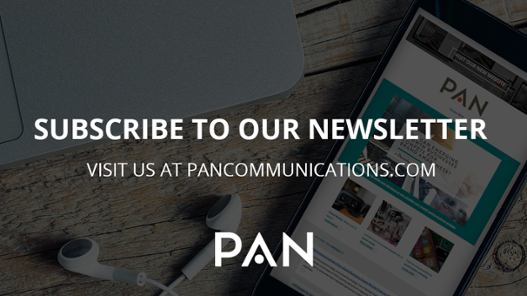Insight from Experts: Employee Advocacy with Ted Rubin

Mark Nardone, EVP at PAN Communications, speaks with Ted Rubin, a leading Social Marketing Strategist, Keynote Speaker, Brand Evangelist and Acting CMO of Brand Innovators. Watch the video or read the transcript below and discover the importance of empowering your employees, having omni-channel on the inside of your organization and turning your employee network into a community.
Interested in learning more? Check out other sections from the conversation: The “Connection Economy”, and The Empowered Customer.
Learn more about integrated marketing and PR, read: Defining Your Integrated Marketing & PR Strategy.
Mark Nardone Intro: Employee Advocacy
Let’s stay on this topic of employee advocacy. Some people would argue, ‘Well that has to rest under the head of HR,’ and all that, and others would probably argue, ‘Well that’s a critical function of the marketer.’ Give me your thoughts.
Ted Rubin on Employee Advocacy:
I think you know for the last three years I’ve been on the advisory board of Dynamic Signal. It’s one of the top – I believe the top – employee advocacy platform. I see it from a few different perspectives.
From my perspective, I think if you empower your employees, they’ll empower your brand. There are so many valuable ways to do it. I see it from the brand’s perspective where they’re struggling with it. And then I see it from the Dynamic Signal perspective where they’re trying to get into these brands and they’re hitting exactly what you’re talking about: their biggest challenge is not getting the brand to this point to agree that it’s something valuable. It’s deciding who’s going to be in charge of it instead of making it about all the different platforms. There’s usually a discussion between HR, comms [communications] and marketing. They all want to own it. Personally, I think HR is the last place in the world where it should live. I just don’t think they understand. They’re just not a part of the comms and the marketing functions.
Then just to quickly segue, just for a second – I think there’s a real problem with all these things being apart. I believe there should be a Chief Customer Officer, whether that should be a CMO who gets a little bit of different training, or if there needs to be a new position everybody reports into it. I personally think it should be the CMO where comms, customer service and all these things come into one person about ‘how do we touch the consumer’.
What’s happening with employee advocacy is this push-pull and this struggle within the organization. It has to do a lot with things that you and I have talked about: omni-channel. One of the biggest problems is that companies talk about omni-channel going out, but they forget about omni-channel on the inside. If you have omni-channel on the inside, you get rid of those silos – I’m in digital marketing. I’m in mobile marketing. Even marketing has silos! I understand people have to have jobs. But there has to be more of a broad focus, and I think we have to get rid of some of those walls.
In terms of employee advocacy, the problem comes down to being concerned with the kind of message we can have going out about our brandfrom our employees, instead of recognizing it’s about the employees more than it’s about the brand. And to me, employee advocacy has to truly empower employees. That means encouraging them to build their social following and their influence, and giving them content that helps them do that.
Take PAN Communications. It’s not just content about PAN. Let’s talk about it from a brand perspective just being selfish. Say you’re a brand with employees that aren’t that social, and you say to them, ‘Hey, we’re going to help you be social. We’re going to give you great content and you’ll be helping your brand.’ But if all Mark shares on his feed is stuff about PAN Communications – PAN just got this award, PAN just landed this thing – what’s going to happen? His followers are going to stop paying attention. Companies have gotten that from the digital marketing era. They know that we can’t pound them every minute with offers. We need to give them content and value. But then they don’t do the same for their employees.
Look, different people have different things. So again it depends on the size of your organization. Obviously with smaller businesses, more people handle more things. But if you’re talking about an enterprise or a Fortune 500 level company, there should be people from HR that are thinking, ‘Hey, our employees care about vacations. They care about education. They care about things to do with their young kids. How many of our employees are in their 30’s with children?’ We should be giving them content about activities to do on the weekends. We should show them we care about what they’re doing. Then you should have comms start thinking about earned media and the things that they’re doing, and what can we share and how can we get more value. Then marketing should think about their marketing message. And then also comms should be thinking about, Well, we won this award and We won this account, and all the other things that you could be sharing.
Now I will tell you that like everywhere else, a lot of companies don’t do a great job of this so I’m sure you heard me say: the network gives you reach, but a community gives you power. And if you treat your employees strictly as a network, you are wasting all that power that can become if you build them into a community.
